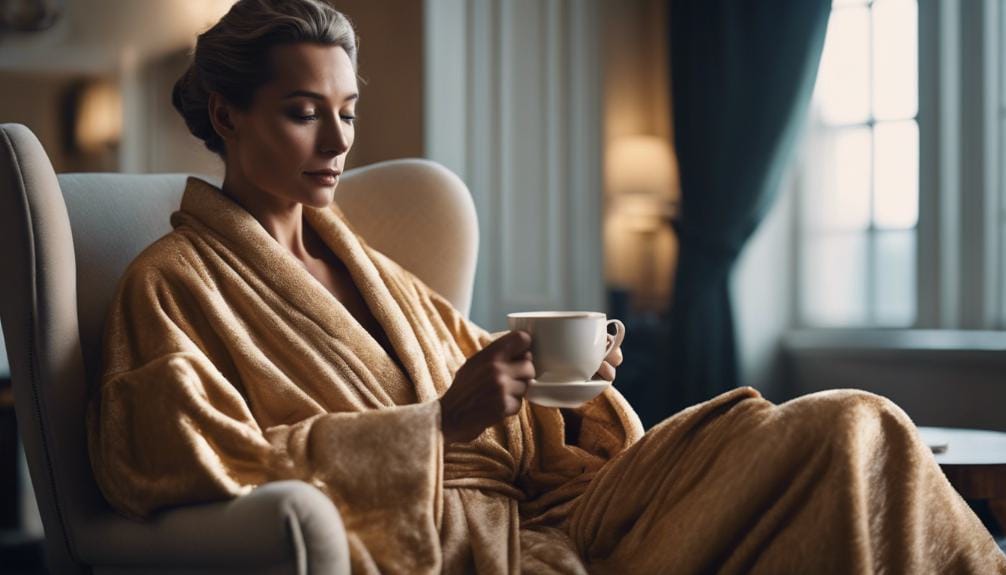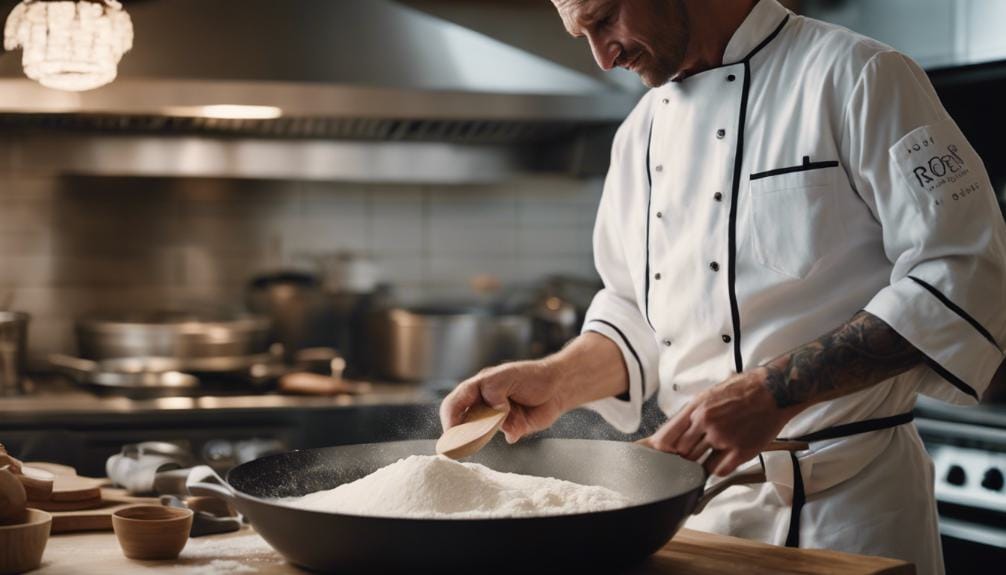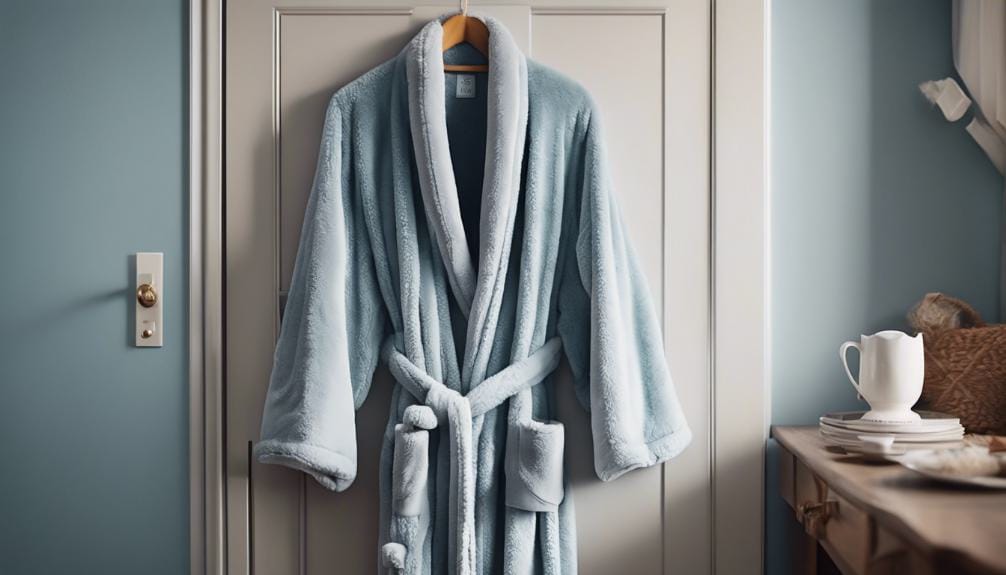What Is a Robe Used for: Unveiling Its Versatility
When you drape a robe around your shoulders, it becomes more than just a piece of fabric; it symbolizes a moment of change and relaxation. The soft embrace of a robe can transform your daily routine, offering a sense of comfort and ease that extends beyond its material form.
But have you ever considered the multitude of functions a robe can serve beyond loungewear? From its cultural significance to its practical uses, the robe is a wardrobe staple that deserves a closer look.
Key Takeaways
- Robes offer versatility, transitioning from loungewear to outerwear seamlessly.
- They provide comfort and warmth post-shower or layered over pajamas.
- Robes serve practical purposes like covering up, chores, or as makeshift blankets.
- Symbolically, robes represent tradition, status, and cultural significance globally.
Versatility of Robes
With their ability to transform seamlessly from cozy loungewear to functional outerwear, robes prove to be a versatile essential in anyone’s wardrobe. One of the most notable uses of robes is their incorporation of traditional Japanese design elements, which often feature wide sleeves and a wraparound style. This design allows for comfort and ease of movement, making them ideal for various activities around the house.
Robes are commonly crafted from absorbent fabric, such as cotton or terrycloth, which makes them perfect for wearing after a shower or bath. The absorbent nature of these fabrics helps in drying off quickly while also providing a cozy feeling against the skin. This feature adds to the versatility of robes, as they can double as a towel when needed.
Moreover, robes are excellent for helping you stay warm, especially when layered over pajamas or nightgowns. The added layer provides insulation, keeping you cozy during colder months or in chilly indoor environments. Additionally, the wraparound style of robes allows for easy adjustability, ensuring a snug fit to trap warmth effectively.
Functions of Robes

Robes serve a multitude of functions beyond just providing warmth, offering lightweight, breathable options that cater to various activities and preferences.
- Versatile Outer Garment: Robes act as a versatile outer garment that can be worn over pajamas, loungewear, or regular clothing. They provide an additional layer of insulation, making them ideal for chilly mornings or evenings when you need extra warmth without the bulk of a heavy jacket. The premium cotton material of robes offers both comfort and breathability, ensuring you stay cozy without overheating.
- Body Covering for Various Activities: Whether you’re lounging at home, getting ready in the morning, or winding down in the evening, robes offer a comfortable body covering suitable for a range of activities. The lightweight nature of robes allows for ease of movement, making them perfect for tasks that require flexibility and mobility. Additionally, the shawl collar design adds a touch of sophistication and style to your loungewear ensemble.
- Functional Features: Robes come equipped with functional features such as side pockets and belt loops that enhance their usability. The side pockets provide convenient storage for small items like your phone or remote, ensuring you have everything you need within reach. Belt loops allow you to secure the robe in place, preventing any unexpected slips or openings. These features add practicality to the overall design of the robe, making it a versatile and functional garment for daily use.
Uses Beyond Loungewear

For tasks beyond relaxation and comfort, robes prove to be versatile garments suitable for a multitude of practical uses. The dressing gown made from soft fabrics like cotton or fleece is commonly used for various chores around the house. They help keep you clean while doing housekeeping tasks like dusting or mopping, acting as a barrier between your clothes and dirt. Additionally, robes can be used to cover up dirty laundry before washing, preventing any mess from spreading.
Robes also come in handy when you need to cover up inappropriate outfits quickly. Whether you’re answering the door unexpectedly or have a wardrobe malfunction, throwing on a robe can save the day in a stylish and functional manner. Beyond household tasks and fashion emergencies, robes have proven to be ideal for various settings. They’re perfect for lounging at home, spa or pool days, traveling, and getting ready in the morning due to their versatility and comfort.
Furthermore, robes can serve as makeshift blankets for pets or children, providing warmth and comfort when needed. Whether you’re cuddling with your furry friend on the couch or tucking in your little one for a nap, robes offer a cozy and practical solution to keep everyone snug and comfortable.
Cultural Importance of Robes

Exploring the rich tapestry of cultural significance attributed to robes reveals a deep-rooted connection between attire and societal values across different traditions and regions. Robes, whether they take the form of dressing gowns, bath towels, or any other piece of clothing, play a crucial role in expressing cultural identity and heritage.
Here are three key aspects that highlight the cultural importance of robes:
- Symbolism of Status and Tradition: In many societies, robes symbolize status, authority, and tradition. They’re often reserved for special occasions, ceremonies, and rituals where they convey respect and honor. The intricate designs, colors, and fabrics used in robes can signify a person’s rank or role within the community.
- Unique Cultural Styles: Different cultures have their distinct robe styles that reflect their heritage and values. For instance, the kimono in Japan represents elegance and grace, while the dashiki in Africa is a symbol of cultural pride. The abaya worn in the Middle East not only serves as a modest garment but also embodies religious and cultural significance.
- Historical and Artistic Significance: Robes have deep historical roots, dating back to ancient civilizations. These garments showcase exquisite craftsmanship, intricate patterns, and artistic embellishments that speak to the cultural identity of a community. Through robes, artisans have preserved traditional techniques and passed down cultural narratives from generation to generation.
Robes: A Wardrobe Staple

Amidst the ever-evolving landscape of fashion trends and wardrobe essentials, the versatility and importance of robes have solidified their position as a staple garment for individuals seeking comfort and functionality in their daily lives. Robes play a vital role in your dressing routine, offering a cozy layer as you prepare for the day ahead or wind down in the evening. Whether you prefer a plush robe for lounging around the house or a lightweight option for warmer days, there’s a robe to suit every need.
| Types | Purposes | Materials |
|---|---|---|
| Plush Robes | Ideal for lounging at home and staying warm. | Soft fabrics like fleece or terry cloth. |
| Hooded Robes | Great for added warmth and coverage, perfect for after a shower. | Absorbent materials like cotton. |
| Lightweight Robes | Suitable for warmer weather or as a cover-up at the pool or beach. | Breathable fabrics such as silk or satin. |
Robes provide a sense of comfort like no other garment, enveloping you in softness and warmth. Their absorbent qualities make them a practical choice for drying off after a bath or shower, enhancing your relaxation experience. Whether you’re enjoying a spa day, unwinding after work, or simply lounging on the weekend, robes are a versatile and indispensable addition to your wardrobe, offering both style and functionality.
Frequently Asked Questions
What Is the Point of Wearing a Robe?
Wearing a robe provides warmth, comfort, and convenience. It’s perfect for cozying up after a shower or before bed. Robes help absorb moisture, making you feel snug. They’re versatile for lounging or getting ready, promoting relaxation and well-being.
Why Wear a Robe Over Pajamas?
Wearing a robe over pajamas helps regulate your body temperature, adds an extra layer of warmth and comfort, and protects your sleepwear from spills or stains. It’s a cozy and convenient way to lounge at home.
Do You Wear Anything Under Bathrobe?
When wearing a bathrobe, you have the choice of wearing undergarments or going without. It’s a personal decision based on comfort and preference. There are no strict rules, so you can choose what feels best for you.
What Were Robes Used For?
Robes served various purposes throughout history, symbolizing authority, offering warmth, and protecting garments. They were worn by royalty, religious figures, and commoners for lounging, sleeping, and daily activities. Robes have adapted to modern fashion, retaining their versatility.
Conclusion
To sum up, robes aren’t just garments for lounging around the house or staying warm after a shower. They serve a multitude of purposes, from providing comfort and style to cultural significance and practicality.
Whether you choose a plush robe for cozy nights in or a lightweight robe for travel, this versatile wardrobe staple is a must-have for anyone looking to add a touch of luxury and relaxation to their daily routine.
